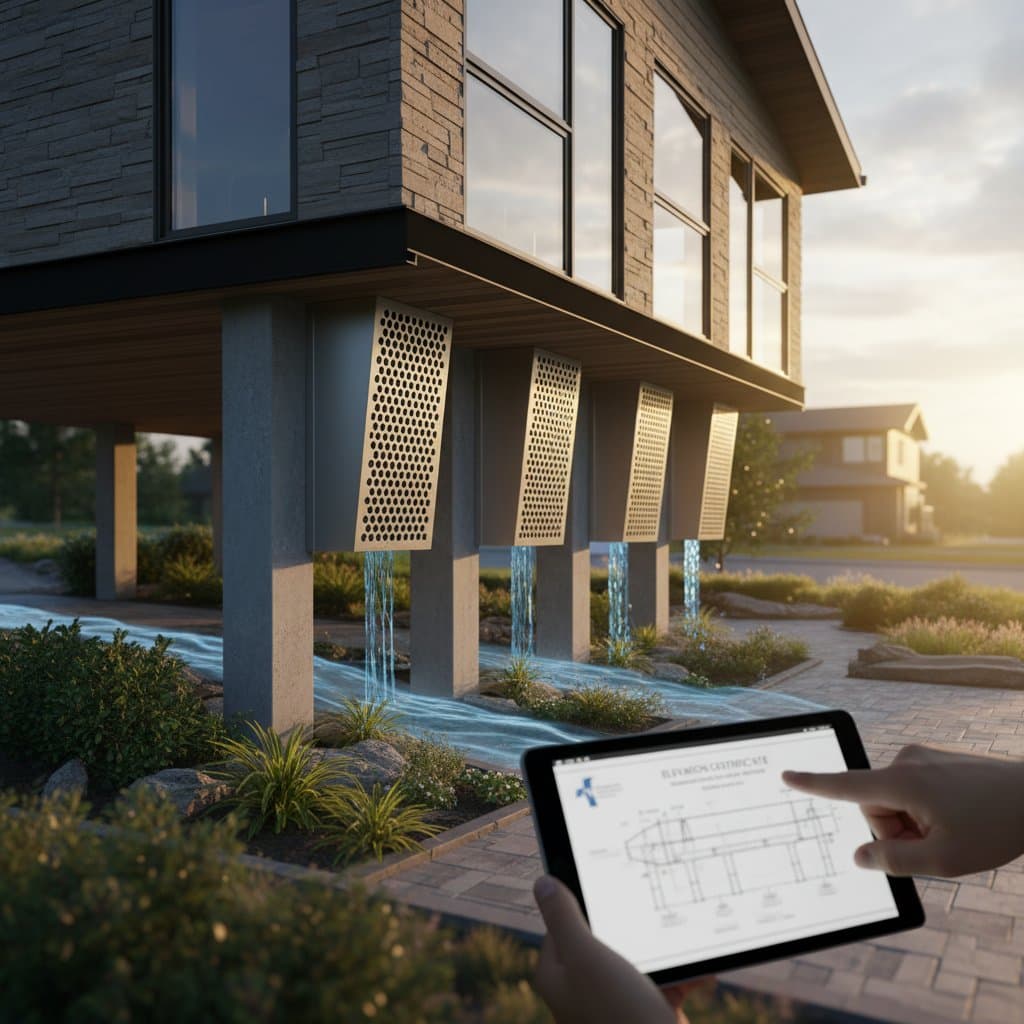DIY Difficulty: Moderate
Professional Inspection Cost: $150 to $250
Install or Inspect Gutter Guards
Gutter guards reduce the frequency of cleaning by blocking leaves and debris, yet they require regular attention to function effectively. During your spring inspection, use a soft brush to remove any accumulated surface dirt and verify that all guards attach firmly to the gutters without gaps or loose sections.
When selecting new guards for installation, consider your local conditions such as tree density and weather patterns. Opt for durable mesh or micro-mesh options in areas with substantial leaf fall, as these allow water flow while trapping larger particles. Foam inserts offer a budget-friendly alternative at lower initial cost, though they degrade faster under prolonged exposure to elements. Budget accordingly for higher-quality guards that provide longer-term reliability.
Materials Cost: $1 to $4 per linear foot
Professional Installation: $500 to $1,500, based on total gutter length and guard complexity
Decide Between DIY and Professional Help
While gutter cleaning appears straightforward, factors like height, debris volume, and safety concerns often influence the best approach. Evaluate your situation using the guidelines below to choose wisely.
Situations Ideal for DIY
- Homes with a single story and straightforward ladder placement
- Minimal debris buildup without signs of structural issues like sagging or leaks
- Personal confidence in ladder use and basic tool handling
- Access to essential safety equipment and a garden hose
Performing the task yourself cuts costs and allows close examination of gutter health. Prioritize safety by positioning the ladder on firm ground and repositioning it as needed rather than overreaching.
Circumstances That Warrant a Professional
- Properties with multiple stories or challenging roof pitches
- Extensive debris, animal nests, or blocked downspouts
- Noticeable gutter separation or harm to adjacent fascia boards
- Constraints related to time, physical ability, or equipment
Hired experts arrive with specialized tools like extension ladders, high-pressure rinsers, and harness systems. Their trained eyes detect subtle issues early, completing the job efficiently and avoiding risks that could lead to injury or overlooked damage. The investment remains reasonable when weighed against potential medical or repair expenses.
Risks Posed by Overlooked Gutter Maintenance
Failing to maintain gutters ranks among the costliest oversights for homeowners, often leading to cascading structural issues. Based on direct experience with various properties, including my own, the following consequences illustrate the urgency of regular checks.
- Wooden Fascia and Soffit Deterioration: Excess water pools behind gutters and saturates supporting wood, accelerating rot that compromises the entire eaves system.
- Foundation Infiltration: Redirected overflow from downspouts channels moisture directly toward basement walls.
- Concrete Surface Cracking: Inadequate drainage erodes the base beneath driveways and paths, causing slabs to shift and fracture.
- Soil and Plant Instability: Runoff strips away mulch and topsoil, leaving roots vulnerable and garden features eroded.
- Shingle and Roof Compromise: Persistent pooling along roof edges forces water beneath protective layers, inviting leaks.
These issues frequently originate from minor neglect, such as unchecked leaf accumulation. Addressing them proactively through maintenance proves far more economical than comprehensive fixes.
Long-Term Benefits and Property Value Protection
Well-maintained gutters enhance a home's resilience without drawing attention, yet neglected ones can undermine sales through failed inspections. Industry professionals note that visible gutter problems may reduce perceived value by thousands, impacting first impressions and negotiation leverage.
Consistent upkeep extends the lifespan of roofing materials and maintains the integrity of exterior finishes. Each $100 invested in preventive care averts potentially thousands in corrective work, delivering exceptional financial returns for diligent owners.
Indirect advantages include improved energy performance. By preventing moisture buildup in basements and crawl spaces, you lower indoor humidity levels, easing the workload on dehumidification and heating systems. These efficiencies accumulate into noticeable utility reductions over seasons.
Key Indicators of Gutter Repair Needs
Monitor for these signals to catch problems early and avoid escalation.
- Rainwater Spillage: Overflow persists despite recent cleaning efforts.
- Structural Separation: Gutters droop or detach from the roof edge.
- Corrosion Evidence: Rust appears or paint flakes beneath gutter lines.
- Ground Settling: Depressions form around downspout discharge points.
- Interior Odors: Musty scents emerge from basements or underfloor areas.
- Seepage at Joints: Water drips from connections during modest showers.
Steps to Secure Your Home's Gutters This Spring
Schedule your inspection now to safeguard against seasonal threats. Follow the outlined checks, cleaning, and guard assessments to ensure smooth water flow. This routine effort not only averts major expenses but also upholds your property's structural soundness and aesthetic appeal for years ahead.



